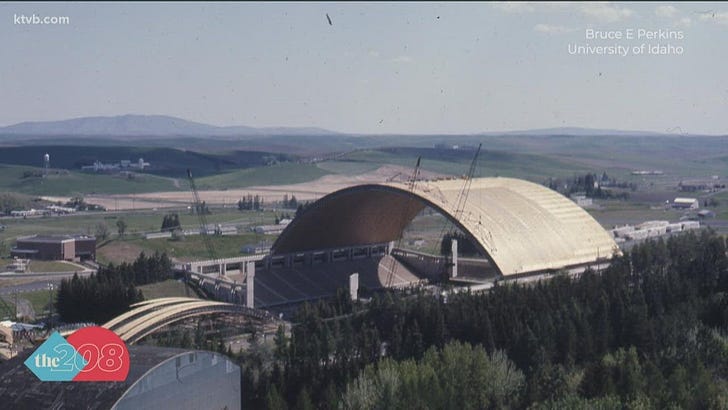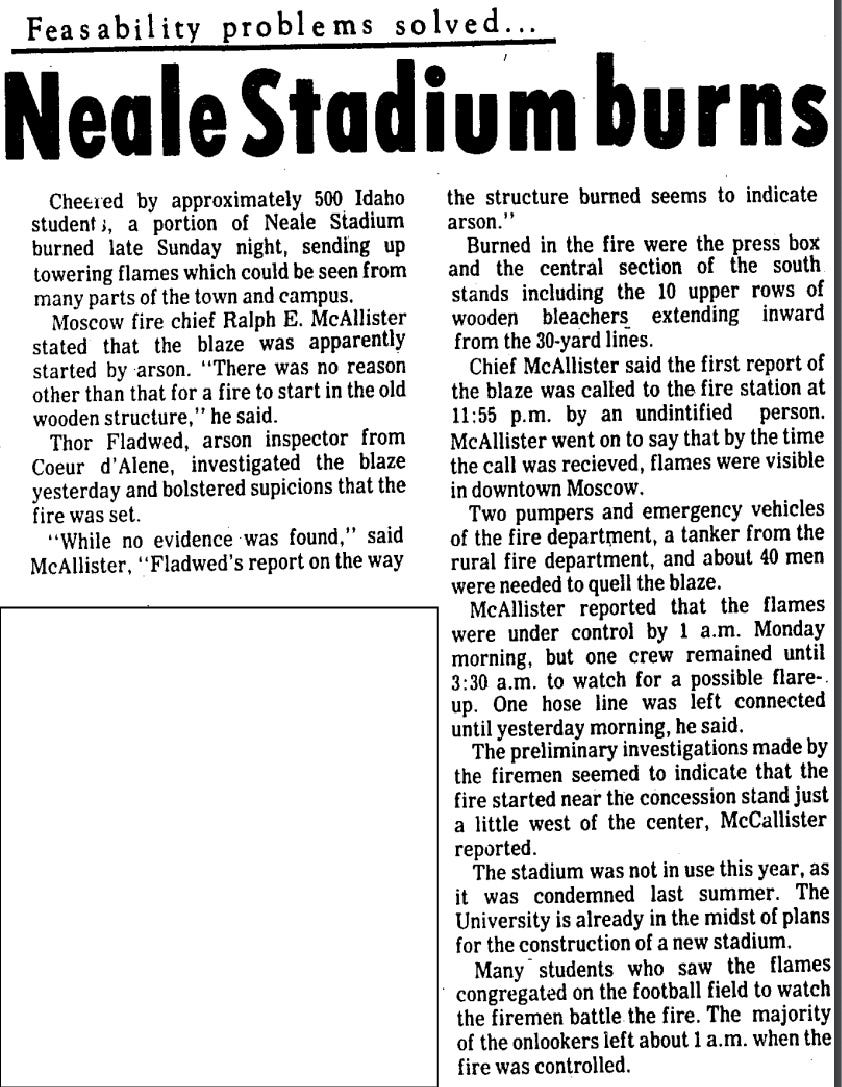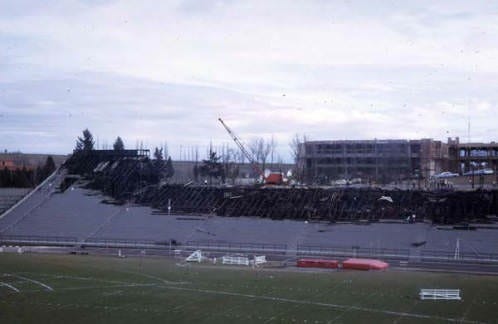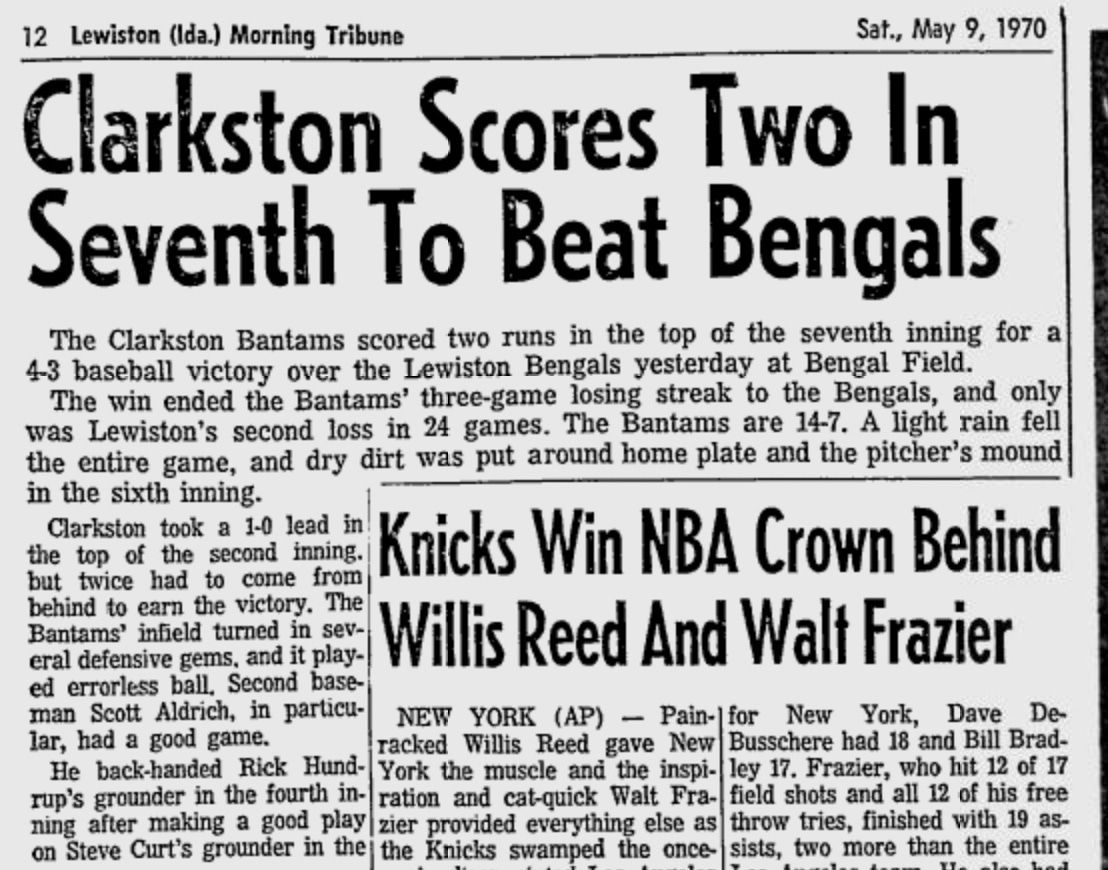Billy Martin did not burn down Idaho's football stadium(s), probably
The legendary character of baseball started his pro career two decades before the blazes, all the way on the other side of the state, but the arsons remain unsolved
Billy Martin began his professional baseball career as an 18-year-old with the Idaho Falls Russets of the Class C Pioneer League, and that’s where the latest episode of Dugout of History leaves off, as Colleen and Chrystal dive into the story of the iconic manager’s early life.
The Idaho Falls Russets have since been the Idaho Falls Yankees (1962-65), Angels (1966-81), A’s (1982-84), Eagles (1985), Braves (1986-91), Gems (1992), Braves, (1993-99), Padres (2000-03), and Chukars (2004-present). Playing in the Pioneer League, they haven’t been in affiliated ball since Rob Manfred used the cover of covid to gut the minors, but they’re very much still out there, managed by former Angels closer Troy Percival.
The Pioneer League also is home now to the Boise Hawks, who were a Northwest League team when I went to see them in 2006 to write about one of Jonathan Papelbon’s younger brothers (neither he nor his twin made the majors). The in-state rivals are a four-hour drive from each other, with Idaho Falls in the eastern part of the state and Boise in the west. Five hours north, there is no minor league team in Moscow, Idaho, but there is the University of Idaho and its quirky football stadium, the Kibbie Dome.
It’s just an aside in a story about the Kibbie Dome that between the condemnation of Neale Stadium and the opening of its then-open air replacement, Idaho played its home football games at Washington State. There’s so much more that happened than just a six-mile trip over the state border (a familiar concept as a New York City football fan) for a couple of seasons.
Neale Stadium was condemned in 1969, at a time when Idaho was already starting to plan for a new football facility. If soil erosion causing the wooden bleachers to sink into the ground wasn’t bad enough, those bleachers caught fire in November. The student newspaper, The Idaho Argonaut, made a nifty little joke in the news story about the fire: “Feasability problems solved…”
At the start of the school year, The Idaho Argonaut quoted financial-administrative VP Dr. Sherman S. Carter on the condemned Neale Stadium:
“No sane engineer would say that the stadium is fit to play in. Some of the supporting columns are hanging in mid-air. At first we thought it could be patched up, but there is no way it can be done.
Carter also said that “there is no foreseeable way we can get the football facility done before the fall of 1972.” Maybe the fire really did solve the feasability problem, because Idaho returned to what opened as Idaho Stadium on October 9, 1971, routing Idaho State, 40-3, at homecoming.
In between, Idaho football crossed the border to Pullman, Washington, to play “home” games at Rogers Field. And, wouldn’t you know it, that stadium also caught on fire in April 1970.
They never caught anybody for the fire that destroyed a huge chunk of the stands, the press box, and thousands of dollars of the campus TV station’s equipment. However, there was another, smaller arson at Rogers Field, and a former Washington State student pleaded guilty for that one. The fire that hastened the construction of what became the Kibbie Dome, and the one that resulted in the demolition of Rogers Field… those remain unsolved and subject to wild speculation.
So, in 1970, Idaho played Washington State in the Battle of the Palouse… not in Moscow, not in Pullman, but in Spokane. Thanks to the University of Idaho library, we have video of that game, the only game Washington State won all season.
While the Cougars played their entire 1970 home schedule in Spokane (new Pac-12 rival Gonzaga hasn’t had football since 1941), the Vandals decided to stick it out at the burned-out Rogers Field, losing to Pacific and Montana, but beating Portland State and Weber State. According to the Argonaut, part of the rental agreement for Rogers Field was that Washington State students could go to the Idaho games for $1. What a deal, to be able to see not only a football game, but a crime scene.
Idaho’s 4-7 record was an improvement over their 2-8 mark in 1969, and accomplished under coach Don Robbins, who replaced YC McNease after spring ball, news that was reported in the Lewiston Morning Tribune on May 9 on the same page as the Knicks winning the NBA title, itself not the main news of Page 12.
The story of McNease’s ouster lacks for details almost as much as the chain of stadium arsons in the Northwest in 1969-70 that also included two race tracks in Oregon and a shed at Whitworth University in Spokane. But it sure sounds like the former Marine got into a fight with one or more players.
“The unrest reportedly stems over McNease’s treatment of the football players, including an incident last week,” Lewiston Tribune sports editor Mike Wilson wrote. “He was reported to have bumped into a player in the hallway at Memorial Gym, and then ripped his coat in the ensuing discussion.”
When’s the last time you ripped your coat in a “discussion?” McNease sued Idaho after he was fired, and eventually settled out of court for essentially the money that was left on his contract when he got the boot.
If you’re not a fan of Washington State or Idaho football, and this story is familiar to you, it could be because friend of the show Ryan Nanni (subscribe to Assigned and Who Killed College Football? today!) wrote about the arsons last year as part of his Buried Treasure series at Homefield. That probably would have been a good thing to realize before going down this rabbit hole, rather than finding the relatively recent story when circling back for one last detail, but here we are. The upside? Digging through the old newspapers to learn more about the Vagabond Vandals led to some other stuff worth digging in on… so subscribe and stay tuned for that!







